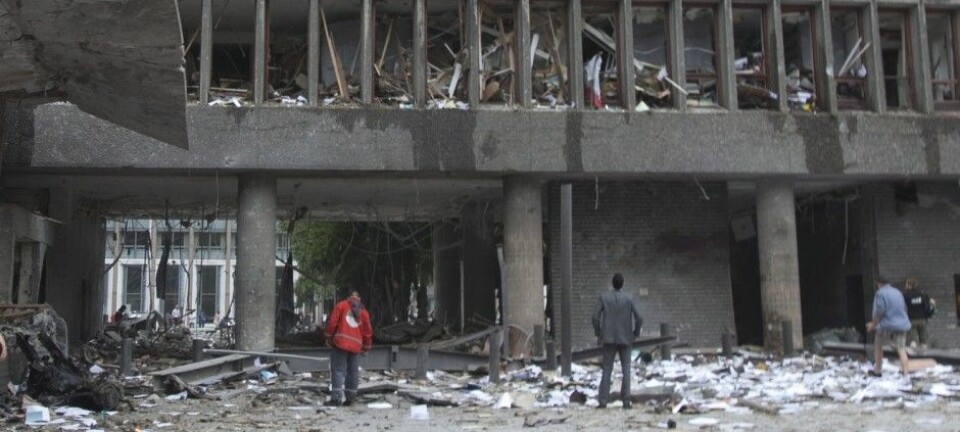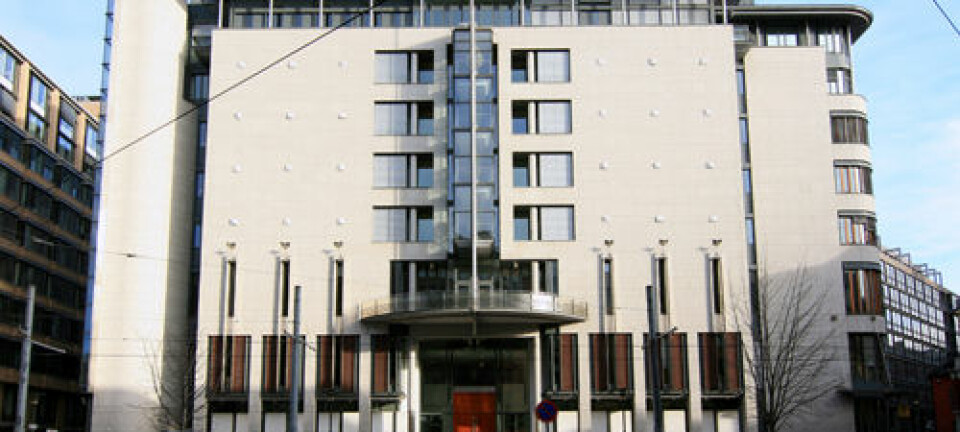
Psychological impacts of terrorist attacks transcend borders
The terrorist attack by Anders Breivik in Norway in 2011 caused a dramatic increase in trauma- and stressor-related disorders in Denmark, concludes a new study.
On 22 July 2011, the terrorist Anders Breivik attacked and killed 77 adults and children in Norway.
The attack not only spread fear in Norway, but also in neighbouring Denmark, concludes a new study.
Following the attack, there was a sharp increase in the number of trauma- and stressor-related disorders in Denmark—the study estimates that 2,736 extra diagnoses of this type of disorders were made at Danish psychiatric hospitals in the first year and a half following the attack. Trauma- and stressor-related disorders is a diagnostic category, which includes acute stress reactions, post-traumatic stress disorders (PTSD), and adjustment disorders.
“Our research shows that the effect of terrorist attacks cross national borders and affect people in other countries to such a degree that they develop mental disorders,” says Søren Dinesen Østergaard, associate professor at the Department of Clinical Medicine at Aarhus University, Denmark.
He is one of the scientists behind the new study that is published in the scientific journal Epidemiology.
Massive increase in trauma- and stressor-related disorders following the Breivik attacks
Between the week of the attack in July 2011 and until the end of 2012, the number of diagnoses of trauma- and stressor-related disorders increased by 16 per cent compared to the expected level. This amounts to 2,736 additional diagnoses.
“At no other time do we find such a marked jump in the number of these diagnoses. It peaks shortly after the attacks, then starts decreasing, and then increases again when Breivik is sentenced and featured in the media once more,” says co-author Bertel Teilfeldt Hansen, a postdoc at the Department of Political Science, University of Copenhagen.
But how do the researchers know that it was Breivik’s attack and not something else that lead to the rise in psychological diagnoses?
According to Hansen, it is because there are no similar jumps in the number of diagnoses at any other time between 1995 and 2012, and because it is extremely improbable that a randomly coinciding event would lead to such a massive increase in the weeks immediately after the attacks. Additionally, it is highly unlikely that Breivik should have deliberately planned his attacks to occur just before an oncoming spike in the number of Danes with a particular mental disorder, he says.
The Breivik attack had a larger effect than the 9/11 attacks
The researchers behind the study have previously studied the effect of the September 11 terrorist attacks in the US.
The attack on the World Trade Center and the Pentagon also affected the psychological health of people in Denmark, though to a much lesser extent. In the year after the attack, an additional 400 diagnoses of trauma- and stressor-related disorders were recorded.
“Even though the September 11 attacks were objectively a more dramatic event—many more people were killed and it had much larger consequences for the world as a whole—the Norwegian attack had a larger negative impact on the mental health of people in Denmark. It could be related to the fact that we are closer to Norway—both geographically and culturally. Many people probably had the feeling that ‘it could just as well have been us’,” says Østergaard.
In the new study, researchers also studied the media coverage of the terroristattack in Norway. The coverage was intense immediately after the attacks, but new peaks in coverage emerged at the beginning and conclusion of Breivik’s trial.
“The increases in media coverage coincide with the increases in mental disorders. This makes sense, as it is only through the media that we can learn about the event in the first place. The more interesting question is perhaps if the extent or type of media coverage of terrorist attacks induces fear to a further extent,” says co-author Peter Thisted Dinesen, a professor (mso) at the Department of Political Science at the University of Copenhagen.
Terrorist attacks make the headlines
Dinesen thinks that the media’s coverage of terrorist attacks is connected to the observed increase in mental disorder.
“It’s striking that we observe a new increase in trauma- and stressor-related disorders when the media covers topics related to the Breivik attack. It shows that the media’s coverage matters, but whether media practices in relation to terrorist attacks should change is another question,” says Dinesen.
According to media researcher Nete Nørgaard Kristensen, an associate professor at the Department of Media, Cognition and Communication, University of Copenhagen, there is no doubt that the media covers terrorist attacks intensely.
She has studied media coverage following the terrorist attack in Copenhagen in February 2015 and on the French satire magazine, Charlie Hebdo in January 2015.
“As the terrorist attacks have occurred closer to us, it’s natural that they occupy more of the media coverage. But the coverage has also changed. There’s an element of live-streaming. Editors broadcast the information live and verify it later. It gives an even greater feeling of being closer to it and that it’s happening here and now, she says.
Whether the media should change how they cover these events is a balance between public health and having an informed public, says Dinesen.
“Future studies should investigate whether certain types of coverage increase or decrease the effect on [people’s] mental health,” he says.
----------------------
Read more in the Danish version of this story on Videnskab.dk
Translated by: Catherine Jex










